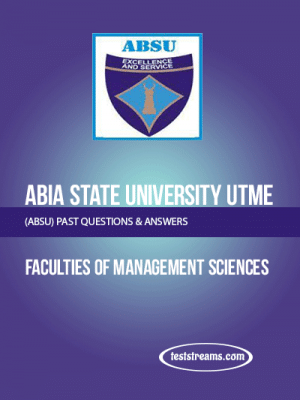Chemistry Exam Questions and Answers for SS1
These Chemistry questions and answers were pulled from our book (Chemistry questions for SS 1); Compiled to serve as a reference material to help teachers draw up test and exam questions faster. It could also help students assess their level of exam preparation. Each sample question includes correct answers.
Sample Chemistry Exam Questions and Answers
TOPIC: ACIDS. BASES. SALTS
DIRECTION: Choose the correct answer from the lettered options.
1. Which of the following oxides is basic?
A. NO2.
B. Al2O3.
C. SO2.
D. CaO.
2. Which is the correct arrangement of the following compounds according to increasing acidic strength?
A. H2SO4 > HCl > HBr > HI.
B. H2SO4 < HCl < HBr < HI.
C. HCl >H2SO4 > HBr > HI.
D. HI < HBr > HCl <H2SO4
3. Which of the following compounds is a base?
A. CO2.
B. CaO.
C. H3PO3.
D. CH3COOCH.
4. The following except ___________ are the different types of salts.
A. normal salt, acid salt, basic salt, complex salt and double salt
B. normal salt, double salt and acid salt
C. complex salt, basic salt, acid salt and hydrolyzed salt
D. double salt, basic salt and complex salt
5. Which of the following are characteristic properties of acids?
(I) They form oxonium ions in water.
(II) They liberate carbon (IV) oxide from trioxocarbonate (IV) salts.
(III) They turn blue litmus red.
(IV)They have a soapy feel.
A. I & II.
B. III & IV.
C. I, II & III.
D. I, II, III & IV.
Click here to get the complete Chemistry questions for SS 1
TOPIC: AIR POLLUTION
DIRECTION: Choose the correct answer from the lettered options.
1. Which of the following statements correctly gives evidence that air is a mixture?
(i) The constituents of air can be separated by physical methods.
(ii) The constituents of air still retain their individual properties.
(iii) If the different constituents of air are mixed together, there will be no evidence of any chemical combination such as heat production or volume change
(iv) The composition of air cannot be represented by chemical formula as in the case of a compound.
A. (i), (iii) and (iv).
B. (i), (ii), (iii) and (iv).
C. (ii), (iii) and (iv).
D. (i), (ii) and (iii).
2. All these are the causes of luminousity in flames except ____________
A. solid particles.
B. solid particles and increased temperature.
C. solid particles and increased pressure.
D. size of materials burnt.
3. The phenomenon whereby the flame enters the tube to consume any oncoming fuel as a result of the air-hole at the base of the burner tube is widely opened or the fuel supply is slowly turned down is known as ___________
A. striking-back.
B. feedback.
C. suction.
D. none of the above.
4. Which of the pollutants causes acid rain?
A. oxides of carbon and oxides of sulphur.
B. oxides of sulphur.
C. oxides of nitrogen and oxides of carbon.
D. oxides of nitrogen and oxides of sulphur.
5. What causes luminosity in a flame?
A. Presence of excess oxygen.
B. Presence of limited oxygen.
C. Presence of solid particles.
D. None of the above.









1 Comments
good